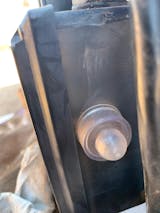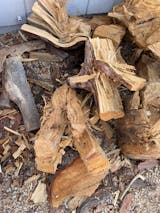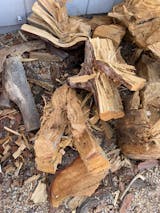Wood chippers are efficient tools for handling yard debris, but they come with potential risks if not used properly. Whether you're trimming branches or clearing fallen trees, using a wood chipper requires understanding and caution. This guide will explain how wood chippers work, why safety is important, and provide essential tips for safe operation.
How Does a Wood Chipper Work?
A wood chipper is designed to break down large pieces of wood, such as branches and twigs, into smaller chips or mulch. These machines can be powered by either gas engines or electricity.
The chipper’s blades or rotor spin rapidly, cutting the wood into smaller pieces as it is fed through the machine. An internal mechanism pulls the wood in, ensuring smooth processing. The machine efficiently reduces the size of the wood, making it easier to dispose of or reuse as mulch.
Why is Safety So Important with Wood Chippers?
Wood chippers can be dangerous due to their sharp blades, high-speed operation, and flying debris. Injuries can occur if the machine isn't used properly. The rotating parts may harm anyone who comes too close, and the blades' speed can pull in clothing or limbs. Additionally, wood chips are ejected at high speeds, posing a risk of eye injuries. Malfunctioning equipment can also create unexpected hazards. Following safety guidelines is crucial to avoid accidents and ensure safe operation.
How to Use a Wood Chipper Safely
Now that you understand how a wood chipper works and the risks involved, here are key safety tips for using one properly:
1. Wear Proper Protective Gear: Always wear safety goggles or a face shield to protect your eyes from debris. Ear protection like earmuffs or earplugs will protect your hearing from the loud noise of the machine. Gloves provide better grip when feeding branches and protect your hands from sharp edges. Steel-toed boots and long sleeves/pants will shield you from falling debris and prevent loose clothing from getting caught.
2. Inspect the Equipment: Before using your chipper, check for loose parts, blockages, or any maintenance issues. A well-maintained chipper is safer and more efficient. Familiarize yourself with the user manual and ensure the blades are sharp and the machine is functioning properly.
3. Create a Safe Work Area: Clear the area around the chipper of any debris or obstacles. Work in a well-lit area, especially if you're working early or late in the day. Keep children, pets, and bystanders at a safe distance, and avoid distractions while operating the machine.
4. Feed Material into the Chipper Safely: Feed branches slowly into the chipper, allowing it to pull the material at its own pace. Never use your hands to push the wood. If needed, use a long stick to guide the branches. Feed one piece at a time to avoid overloading the machine and causing jams.
5. Turn Off When Not in Use: Always turn off the chipper when you’re done or when adjusting or clearing blockages. Disconnect the power source or shut off the engine before making any changes to the machine.
Conclusion
Wood chippers are valuable tools for managing yard waste, but safety is paramount. By understanding how the machine works, why safety matters, and following essential safety tips, you can use your wood chipper efficiently and safely. Remember, prioritize safety and always operate the machine with caution to avoid accidents.

















